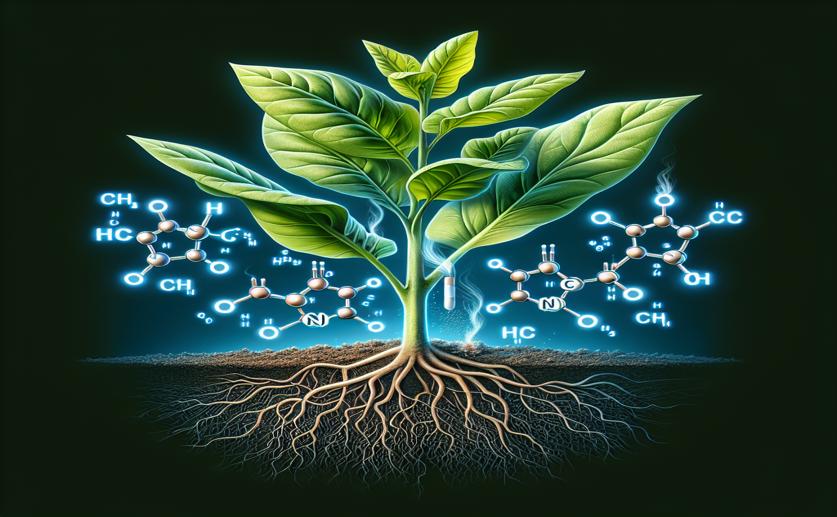
How Hydrogen Sulfide Influences Young Tobacco Plant Growth
Jenn Hoskins
5th March, 2024

Image Source: Natural Science News, 2024
Key Findings
- Study from Wuhan Polytechnic University shows H2S boosts tobacco plant growth
- Treating plants with H2S increased protective enzymes, aiding stress resistance
- H2S treatment improved plant size and seed germination speed, but not germination rate
AgricultureBiochemPlant Science
References
Main Study
1) Effect of hydrogen sulfide (H2S) on the growth and development of tobacco seedlings in absence of stress.
Published 2nd March, 2024
https://doi.org/10.1186/s12870-024-04819-w
Related Studies
2) Transcriptomic analysis reveals the functions of H2S as a gasotransmitter independently of Cys in Arabidopsis.
3) Key role of reactive oxygen species-scavenging system in nitric oxide and hydrogen sulfide crosstalk-evoked thermotolerance in maize seedlings.
4) Effect and mechanism of NaHS on tobacco bacterial wilt caused by Ralstonia solanacearum.
5) Gasotransmitter H2S accelerates seed germination via activating AOX mediated cyanide-resistant respiration pathway.



 9th February, 2024 | Jim Crocker
9th February, 2024 | Jim Crocker